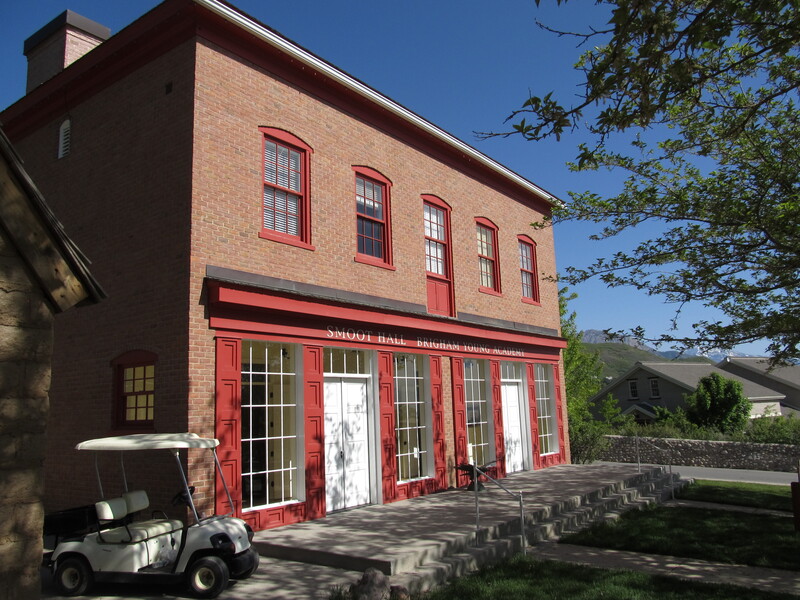Lewis Building

Built as a warehouse and rented out for concerts and parties, the Lewis Building was ultimately Brigham Young Academy’s first long-term schoolhouse, from 1876 until its destruction in a fire in 1884.
Before there was a Brigham Young Academy (BYA) Building at Academy Square, BYA’s first schoolhouse was the Lewis Building (or Lewis Hall, evidently named after J.W. Lewis, who leased it from Brigham Young, president of The Church of Jesus Christ of Latter-day Saints). The Lewis Building was originally built as a warehouse and used as an amusement hall, but it became a place of learning when brothers Warren and Wilson Dusenberry rented it as an expansion to their “second Dusenberry school” in 1869.
By the summer of 1870, the University of Deseret took notice of the Dusenberry school and incorporated it as the Timpanogos Branch of the University of Deseret. Young, who owned the Lewis Building, was keenly interested in the school’s success. When the Dusenberrys struggled to make ends meet, Young often waived their rent.
Starting in 1873, however, the Timpanogos Branch began buckling under financial hardship. Rent prices rose while enrollment stagnated, and the Dusenberries had to take on extra jobs to keep themselves afloat while the Timpanogos Branch struggled. In the spring of 1875, the Timpanogos Branch closed completely.
However, Young turned the closure into a new beginning. Having contemplated establishing a school in Provo for years, Young deeded the Lewis Building as a home for a new institution, Brigham Young Academy, and he hired Warren Dusenberry as a principal and Wilson Dusenberry as a teacher. The Lewis Building underwent repairs for the remainder of 1875. Brigham Young Academy opened for its first term in January 1876. Warren resigned as principal in April, and Karl G. Maeser replaced him as the Academy’s first long-term principal.
Although the young Brigham Young Academy now fully controlled the Lewis Building, it still struggled to keep financially afloat. Young’s deed voided rents as a burden, but enrollment was still down; in August 1876, BYA started its fall term with only ninety-seven students and about $100 in its balance. To stay solvent, BYA rented rooms for parties and concerts, even during school hours, which interrupted students’ studies. A year later, in August 1877, Young died, leaving it up to trustees to manage BYA.
Yet the longer BYA survived, the more it thrived. In 1878, the school’s Academic Department, the only department for older students, split into four: Language, Polytechnical, Commercial (these three were taught at a high school level), and Scientific (for even more advanced students). In the late 1870s, BYA also organized a Normal Department, for teacher training. By 1880, over 300 students were enrolled, and in 1881, BYA awarded its first collegiate diploma to James E. Talmage, the future apostle-scientist.
Tragedy struck when a fire destroyed the Lewis Building in 1884, leaving BYA without a schoolhouse. Reed Smoot, future apostle-senator, recalled saying to Principal Maeser, “Oh, Brother Maeser, the academy has burned.” Maeser rebuffed Smoot’s dismay. “No such thing,” Maeser said. “It’s only the building.”
BYA worked quickly to borrow and rent rooms for classroom use, and it lost only a day of classes, reconvening on Tuesday in whatever spaces could be secured in buildings around Provo. BYA was homeless until a new structure was built in 1892.
The Lewis Building was gone, but Brigham Young Academy—now University—lived on. In recognition of the Lewis Building’s legacy, in 2004, This Is the Place Heritage Park built its Smoot Hall building as a replica of the original Lewis Building, BYA’s first home.
Images





